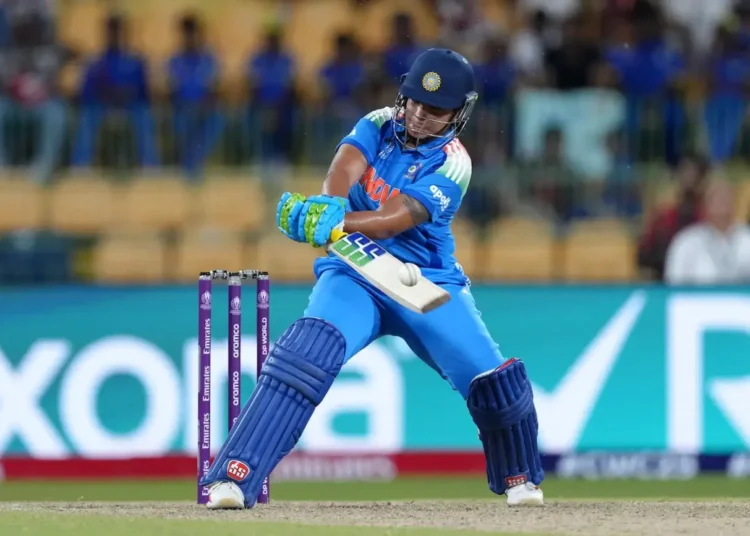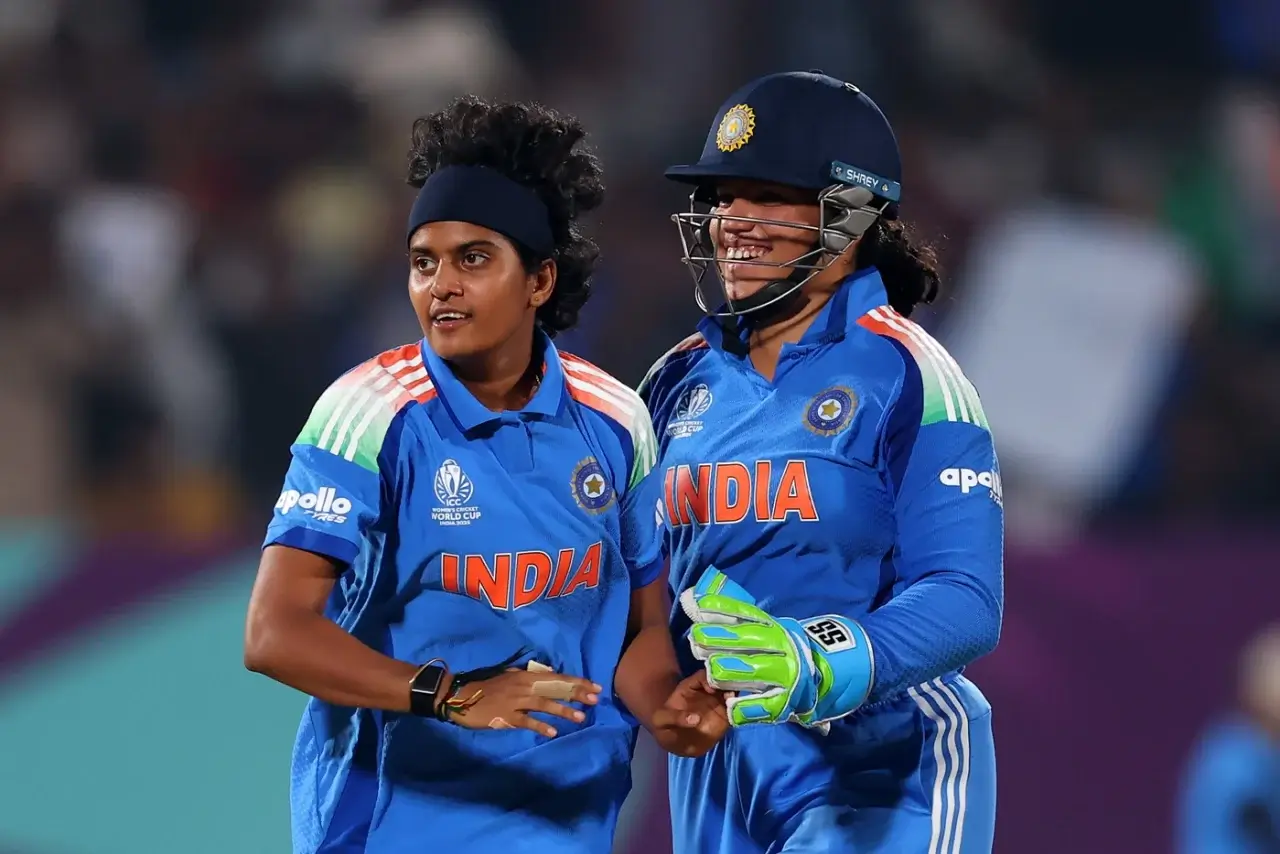The Women’s ODI World Cup 2025 has reached a critical point for both India and New Zealand. With rain clouds hovering over Navi Mumbai, both sides face not just each other but the possibility of elimination. India enters this match on the back of three consecutive defeats, each slipping away from promising positions. Their campaign, filled with bright starts and poor finishes, now hangs by a thread.
For New Zealand, it’s no less desperate. Two washed-out games have left them needing back-to-back wins to qualify. Their recent form has been inconsistent, and dependence on Sophie Devine remains their biggest concern. The weather, unfortunately, may once again dictate the outcome, as showers threaten to spoil what promises to be a thrilling clash.
The last time these two sides met in a high-pressure game, New Zealand prevailed comfortably. But this time, with Amol Muzumdar’s India fighting to keep their hopes alive, the narrative could shift dramatically under the Mumbai skies.
India Under Fire After Three Straight Defeats
The Indian camp finds itself under mounting scrutiny after three successive losses. Each game showed promise but ended in frustration. Their batting order, once seen as a strength, has failed to convert starts into match-winning scores. The decision to drop Jemimah Rodrigues for an extra bowler against England raised eyebrows, though the bowlers did manage to restrict England to 288.
Still, chasing under pressure exposed familiar flaws. Smriti Mandhana and Harmanpreet Kaur provided solid starts, but the middle order collapsed again. Muzumdar admitted post-match that the team needed more composure in the crunch overs. With semi-final hopes fading, India now must strike the right balance between aggression and control.
The players know the margin for error is gone. A win here could reignite their campaign, but another loss might end it. Even a washout would keep them hanging by a thread, offering only mathematical chances to advance.
Familiar Venue, Familiar Pressure
The DY Patil Stadium has hosted many WPL and T20I matches featuring this squad. The players know its bounce, its dew, and its crowd energy. Yet, familiarity offers no comfort when pressure builds. Navi Mumbai’s humid evenings have seen India’s bowlers tire in death overs. Muzumdar’s challenge lies in managing rotations smartly while maintaining control over wet outfields.
A washed-out session earlier this week disrupted training plans. Still, Muzumdar remains optimistic that “focus and intent will make the difference.”
New Zealand’s Rain-Cursed Journey Continues
Rain seems to have followed New Zealand since leaving Colombo. Two straight washouts have not only hurt their points tally but also broken their momentum. Devine called it “frustrating but uncontrollable.” Their batting lineup, led by Amelia Kerr and Brooke Halliday, has shown glimpses of promise. Yet, Suzie Bates and Georgia Plimmer’s struggles at the top have hurt their rhythm.
Their spin department, featuring Amelia Kerr and Eden Carson, has lacked penetration on slower Indian pitches. The management knows that restricting India’s strong batting lineup will need sharp planning and tight fielding.
If the game gets shortened, expect Devine to go aggressive early. A 25-over shootout could play perfectly into their T20-style approach. Still, the team needs discipline more than desperation to stay alive in this World Cup.
Sophie Devine’s Calm Amid Chaos
Even under immense pressure, Sophie Devine remains composed. Her experience as captain during New Zealand’s T20 World Cup triumph last year continues to guide the team. She knows how to use momentum, even in wet conditions. Devine’s tactical reading of bowlers and field placements makes her a constant threat, especially against India’s inexperienced pacers.
She’ll be determined to get a full game — a rare luxury lately.
Kranti Gaud Faces Her Biggest Test Yet
Among India’s emerging talents, Kranti Gaud has shown both brilliance and inexperience. Her opening spells have impressed — tight lines, smart yorkers, and early breakthroughs. But her death bowling has been a weak spot. Conceding heavy runs in the final overs has cost India vital games.
In Navi Mumbai’s humid air, Gaud’s ability to control swing will decide India’s powerplay success. Muzumdar has defended her strongly, saying, “She’s learning fast and improving with every game.” The captain’s trust remains intact.
If Gaud can find rhythm early and dismiss Devine or Kerr, India could dominate. This game could define her young international career.
A Learning Curve Under the Spotlight
At just 22, Gaud represents India’s transition toward a younger pace unit. She’s aware of the expectations and the criticism. Yet, every spell teaches her something new about game control. Navi Mumbai offers her another chance to adapt, grow, and silence doubts about her temperament.
Her performance here could turn India’s campaign around or expose the same cracks again.
Pitch Report and Weather Predictions
The DY Patil Stadium pitch has offered mixed results so far. In recent games, it looked flat but slowed down later, aiding spin slightly. Dew remains a major factor, making bowling the second trickiest. Batters who spend time early could cash in during the middle overs, like the Australian team.
However, the bigger concern remains the weather. Evening showers have been frequent across Navi Mumbai. If rain disrupts the match, Duckworth-Lewis calculations may decide the result. For India, a washout isn’t a total disaster. It gives them a small breathing space ahead of their next challenge.
Rain might favor India slightly, given New Zealand’s remaining clash with England looms tougher. But both teams know — only a win keeps true hope alive.
How Rain Could Change Qualification Scenarios?
A no-result here keeps India narrowly ahead on run rate. But it forces them to rely on England beating New Zealand in the next fixture. For New Zealand, rain would end all realistic qualification chances. That’s why Devine’s side desperately wants a full 50-over contest.
India, on the other hand, wouldn’t mind sharing points if batting first becomes risky under clouds.
India vs Bangladesh Link – Lessons from Close Games
India’s recent struggles mirror those seen in their past timeline battles against Bangladesh. Those encounters often exposed India’s issues with finishing tight matches. Learning from those lessons, Muzumdar emphasized building partnerships and converting starts.
You can revisit those insights in detail at the India vs Bangladesh National Cricket Team Timeline. It perfectly captures India’s pattern of losing control in decisive overs — something they must fix tonight.
That link between past mistakes and current pressure defines India’s learning curve this World Cup.
Conclusion
The India vs New Zealand clash in Navi Mumbai carries more than just points. It’s a battle of survival, pride, and rain-induced uncertainty. Both teams walk into DY Patil knowing one result can change everything. India seek redemption after three heartbreaks, while New Zealand fight against both weather and waning confidence.
If the clouds stay away, expect an intense, emotional showdown between bat and ball. For India, this is the moment to reclaim belief and prove their resilience. For New Zealand, it’s one last chance to rewrite a campaign that’s gone off-track.
Under those lights, amid the humidity and the noise, only one truth remains — you cannot win if you fear losing.





